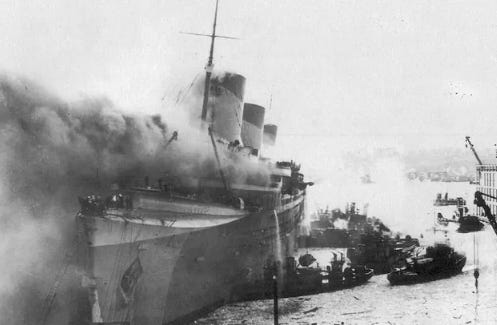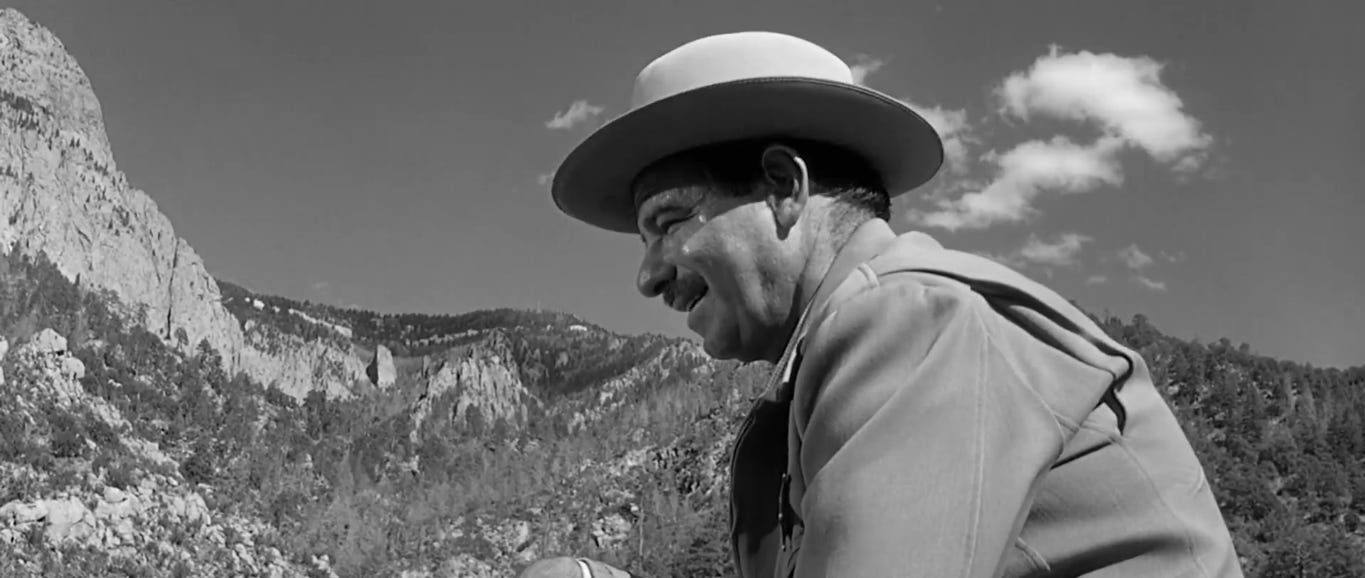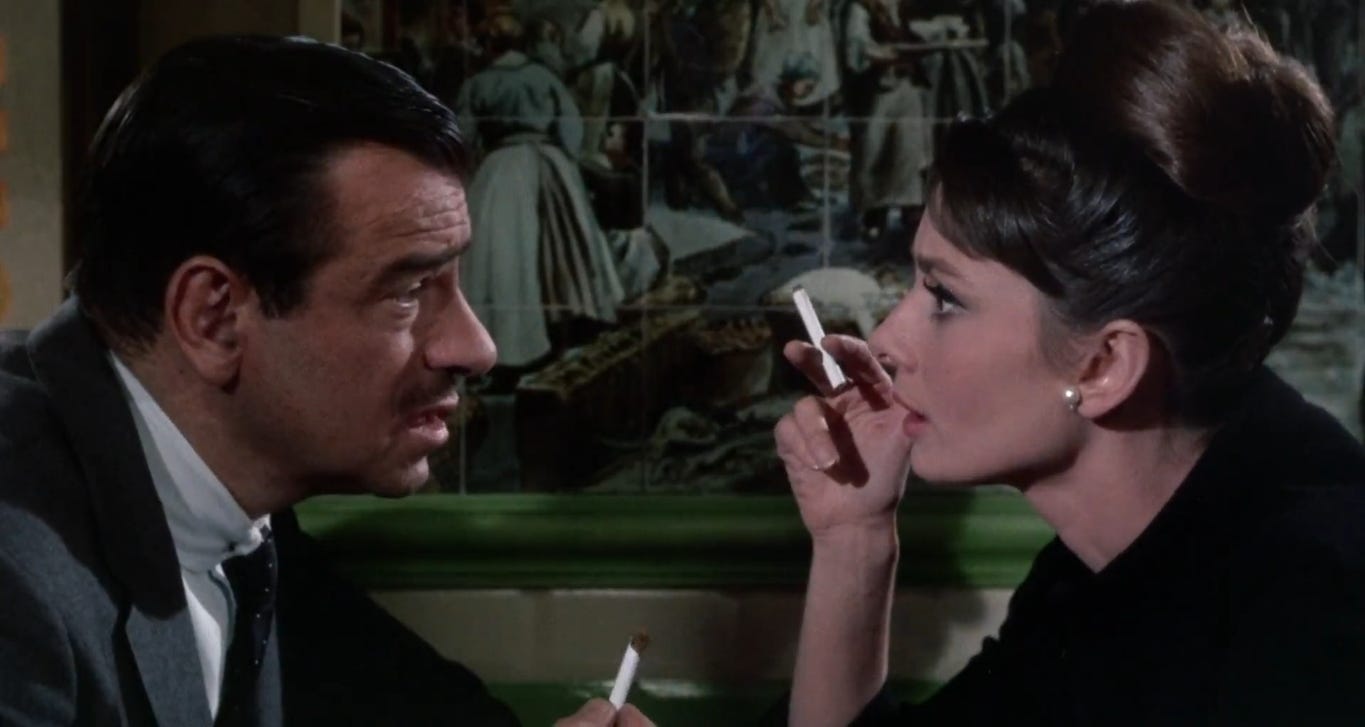Kotch (1971)
I never sang for my Kotch.
Obsolescent. Senescent. Superannuated. Those are the whispers surrounding Joe Kotcher (Walter Matthau) after he moves in with his grown son. But Kotcher doesn’t get it—he doesn’t feel old.
Kotcher is eccentric and garrulous, witty and spry, but he just doesn’t seem to gel in his new environs. When his family tries to offload him to a retirement village, Kotcher ditches the family and goes on a journey of discovery. He ends up shacking up with his family’s old babysitter, Erica (Deborah Winters), who is dealing with an unplanned pregnancy in Palm Springs.
From there, the beats come straight from the “young woman has meaningful platonic relationship with older man” playbook.1 Kotcher gets to feel needed and Erica gets to feel supported.2 Plus, Kotcher makes friends around Palm Springs, becoming a respected part of the community.
After Erica has the baby and moves back to Los Angeles, Kotcher’s family tracks him down and asks him to move back in with them. He tells them to pound sand: he fits in in Palm Springs and that’s where he’s gonna stay.3
Rating: 6/10, a character journey where you don’t buy the character or the journey.
Cast and Crew
This is the first film we’re watching with Walter Matthau. Here are some adjectives associated with his typical characters: shaggy, shambling, rumpled, slouched. These nail some of his most famous comic roles (the slovenly Oscar Madison in 1968’s The Odd Couple, the drunken Coach Buttermaker in 1976’s The Bad News Bears) but ignore his range: he could also play lovably gruff romantic partners and stern authority figures. Let’s run down some of his early films:
A Face in the Crowd (1957). This film’s got big Elmer Gantry vibes: Andy Griffith4 becomes a famous radio personality and wields his newfound power irresponsibly. Along with Walter Matthau, it co-starred Patricia Neal and Lee Remick. It also reunited screenwriter Budd Schulberg with director Elia Kazan; you’ll remember their first team-up was the classic On the Waterfront.
Lonely Are the Brave (1962). In the 1962 Wrap-Up, we wrote that this film has the same plot as the TV show “Prison Break,” and yeah, that’s sorta true: Kirk Douglas gets himself locked up so he can break his brother out of the clink. The second half is generic—Douglas flees Walter Matthau’s sheriff—but the film’s exploration of the “prison” of modernity vs. the freedom of nature is well-executed.5
Walter Matthau was third-billed in Charade (1963), the Stanley Donen-directed mystery that starred Audrey Hepburn and Cary Grant. Does that mean we get to put a picture of Audrey Hepburn in today’s newsletter? Sure does!
Matthau has long been in the background of this column, holding roles in many films we’ve mentioned in passing. He was in Fail Safe (1964), the Sidney Lumet take on mutually assured destruction. He found stardom paired with Jack Lemmon, first in The Fortune Cookie (1966, briefly discussed here), then in The Odd Couple, then in eight more films.6 And then there’s Hello, Dolly! and Cactus Flower (1969), both of which we touched on in this Wrap-Up. There’s much more to discuss about Matthau so we’ll come back to him the next time he’s up for Best Actor.
PEGOTer7 Marvin Hamlisch scored Kotch and wrote its Oscar-nominated song “Life Is What You Make It.”8 This is one of his early film scores, but he’ll be back soon: as his NYTimes obit puts it, “For a few years starting in 1973, Mr. Hamlisch spent practically as much time accepting awards for his compositions as he did writing them.” We’ll see his work in two 1973 films (Save the Tiger and The Sting), but we won’t see what he’s best remembered for: The Way We Were, where he won Oscars for both the score and the title track. Oh, and not just Oscars: Barbra Streisand sang that title track, it went to #1, and Hamlisch earned Grammys for Song of the Year and Best New Artist.9
Another major Pavlov for Marvin Hamlisch is “A Chorus Line,” a Hamlisch-scored Broadway musical about those auditioning to be on a chorus line. Beyond that…well, I mean, if you wanted, you could remember that Hamlisch wrote the Lesley Gore song “Sunshine, Lollipops and Rainbows” and Bond theme “Nobody Does It Better,” or that he matriculated at Juilliard when he was seven years old (!!), but mostly ya gotta know The Way We Were and “A Chorus Line.”
The Trivia
Kotcher mentions sailing to Europe twice with his late wife, both times on the Mauretania. That gives us the opportunity to talk about passenger ships sailing the transatlantic route.
For a long time, voyages across the Atlantic were for adventurers and pilgrims. The trip was dangerous, unpleasant, and long. Even with the advent of steam, which reduced crossing times dramatically, there still wasn’t much demand for the trip, so early ships running regular transatlantic routes supported not passenger travel but mail. Cunard, begun in 1839 as the British and North American Royal Mail Steam Packet Company, delivered mail across the Atlantic on wooden paddlesteamers. But as mail ships started regularly making the crossing quickly and safely, passenger demand grew. Cunard accommodated it, though their early steamships were not yet comfortable (Charles Dickens referred to one as a “gigantic hearse”).
One way to recognize early Cunard ships is that their names often end with “-ia.” Two to know from the beginning of the 20th century are the sister ships Lusitania and Mauretania, both largest in the world when they were constructed.
Lusitania. Most famous for being torpedoed by a German U-boat in 1915, contributing (sort of) to the U.S. entering WWI. I read Erik Larson’s “Dead Wake” for a book club, but because it was a book club, I read the whole book the night before we met and for that reason I don’t remember a damn thing about it—except that, like, maybe it was the Lusitania’s own fault that it got torpedoed? Something like that. Anyway, sometimes you’ll be expected to know that “Lusitania” was a Roman province located in modern Portugal and western Spain.
Mauretania. This is the one that wasn’t torpedoed. She was big and fast: she held the Blue Riband (a prize awarded to the ship that made the fastest transit of the Atlantic) for twenty years.10 Note that the ship was named for Mauretania, a province of the Roman empire located in modern-day Morocco and Algeria (and, confusingly, not in the modern country of Mauritania).
You should also know Cunard ship Carpathia, mostly since she was the one that rescued the survivors of the Titanic (a White Star ship; see below). The Carpathia sank in 1918 because ships sank all the time back then.
Cunard competed in the transatlantic space against a number of other companies, most notably White Star Line. While Cunard’s ships end with “-ia,” White Star’s ships usually ended with “-ic.” The two lines had a bit of a rivalry: though both were initially British, White Star was acquired by American J. P. Morgan in 1902, leading the British government to support Cunard in building big fast ships like the Mauretania as a matter of national pride.
Here are the three White Star ships you should know, all Olympic-class ocean liners:
Olympic. This is the one nothing bad happened to. Contrast that to…
Titanic. She whammed into an iceberg and sank on her maiden voyage. James Cameron made a 1997 film about the event—I think it was called “Jack and Rose and the Unsinkable Ship that Sank.” People love Titanic trivia, so here’s some stuff:
Robert Ballard, a guy who’s really good at finding ship corpses, found the corpse of the Titanic about 400 miles off the coast of Newfoundland.
The Unsinkable Molly Brown wasn’t a boat—she was a rich lady who survived the Titanic.
Here are two acutely sinkable rich dudes who died on the Titanic: John Jacob Astor IV and Benjamin Guggenheim. J.P. Morgan was supposed to be on board but he changed his plans at the last minute—how suspicious.
The band played on as the ship went down. One notable track they bumped was hymn “Nearer, My God, To Thee,” which is the kind of morbid humor the people on the Titanic were probably too cold and wet to enjoy.
Many who died on the Titanic were buried in Halifax, Nova Scotia.
We mentioned many were rescued by the Carpathia. Another ship, the Californian (a British Leyland Line steamship) saw the Titanic’s emergency rockets but didn’t bother to come because the Titanic is boring.
Britannic. Though not as famous as the Titanic, the Britannic also sank: during WWI, it was serving as a hospital ship and whammed into a mine. (Ships sank all the time back then.) The wreck was discovered in 1975 by Jacques Cousteau.
White Star and Cunard merged in 1934, eventually continuing on under just Cunard’s name. After the merger, they changed up their naming convention: now their ships are named after famous British ladies.
Queen Mary. In service from 1936 to 1967 and was the 2nd-to-last Blue Riband winner11. Now she’s a floating hotel in Long Beach (which featured in “Arrested Development”).
Queen Elizabeth. Ran from 1946–1968 and was replaced by the even-more-famous Queen Elizabeth 2. The QE2 was on the water from 1969 to 2008 and, in the process, traveled the most miles of any passenger ship ever. Now she’s a floating hotel in Dubai.
Cunard’s current fleet is the Queen Anne, Queen Victoria, Queen Elizabeth (fully rebooted, I guess, instead of calling her the QE3), and Queen Mary 2.
But what happened? Why don’t we talk about big exciting steamships anymore? Well, have you heard of planes? They’re faster. The Blue Riband became a thing of the past and the goal of speed was fully replaced with the goal of luxury. Now if you’re going on a ship, it’s probably to knock back some umbrella drinks by a pool, which is why Cunard—stodgy, historic Cunard—is now owned by Carnival.
This is all just scratching the surface. Going down the ship iceberg (that’s probably a poor choice of words), you could learn about the French Line Compagnie Générale Transatlantique (CGT), which launched the Normandie in 1935.

Or, if you wanna go farther back, you could know the Great Britain, built by Isambard Kingdom Brunel for Great Western Steamship Company. That ship’s now a museum. Lots of people like old boats. Not me, though.
Odds and Ends
Kotcher mentions Dr. Benjamin Spock, Olympic athlete and author of “The Common Sense Book of Baby and Child Care”…Kotcher uses the Latin phrase “quis custodiet ipsos custodes,” which roughly translates to “who shall watch the watchmen”…Kotcher’s daughter-in-law takes Seconal, a barbiturate we don’t prescribe anymore…Kotcher mentions Jungfrau, one of the main summits of the Bernese Alps (others include Eiger and Mönch)…Kotcher sings some of “When I Was a Lad,” a ditty from the operetta “H.M.S. Pinafore”…director Jack Lemmon’s wife Felicia Farr played Kotcher’s daughter-in-law…Walter Matthau was born Walter Matuschanskayasky; we’ll discuss two more of his 1971 films in our upcoming Wrap-Up.
We last saw that script in The Heart Is a Lonely Hunter. 1971 also saw a gender-flipped and less platonic version of this in Harold and Maude. Unfortunately, Kotch isn’t nearly as affecting, funny, or insightful as either of those films.
Erica’s thoughts on Kotcher: “He was an awful pain in the ass the way a lot of the time old people are—but he was really swell.”
Why’s the film called Kotch? Well, the main character is called “Kotcher” throughout the film, but after he’s found the place he belongs, he morphs into “Kotch”—the happy, respected individual beginning his next act.
This was Andy Griffith’s first film role. He became better known for television roles on “The Andy Griffith Show” and “Matlock.”
The film is based on an Edward Abbey novel, which explains the film’s strident anti-modernity bent. Abbey was an environmentalist known for “The Monkey Wrench Gang,” a novel about environmentalists trying to blow up Glen Canyon Dam. In the Southwest, Abbey remains a big deal.
Kotch was also low-key a Matthau-Lemmon team-up since Jack Lemmon directed the film. It was Lemmon’s only directorial effort.
That’s completing the EGOT (winning an Emmy, Grammy, Oscar, and Tony) and also scoring a Pulitzer Prize. Only two people have a PEGOT: Hamlisch and Richard Rodgers.
The song, with lyrics from Johnny Mercer, is a snoozer, reminiscent of all that sucky “sophisticated hedonism” of Henry Mancini and Burt Bacharach. Allow me to recommend the far-superior “Life’s What You Make It” by Talk Talk.
I can’t stress enough how weird the Grammy for Best New Artist is. Look through the nominees and winners from whatever time period of music you’re most familiar with and have yourself a laugh.
This Mauretania was scrapped in 1935 and a new one came into commission in 1939. In the film, Kotcher mentions his two transatlantic voyages were on the two different Mauretanias.
The Queen Mary lost the title to the United States, after which no one contested for the Blue Riband again.





"... the “young woman has meaningful [brief] relationship with older man” playbook ..." <-- And you haven't even gotten to The Hospital or Save the Tiger yet!
"... Jack Lemmon’s wife Felicia Farr played Kotcher’s daughter-in-law" <-- A much more awkward pairing, in Charley Varrick, was yet to come: https://media.gettyimages.com/id/143430471/photo/walter-matthau-and-felicia-farr-in-charley-varrick.jpg?s=1024x1024&w=gi&k=20&c=tG_4nZQkZDUp8QfGKf6V0qRqJKMqx6VpQSZnP5fwb3A=
"Walter Matthau was born Walter Matuschanskayasky" <-- Back on fact-checking detail! His birth surname was "Matthow." https://www.snopes.com/fact-check/walter-matthau/